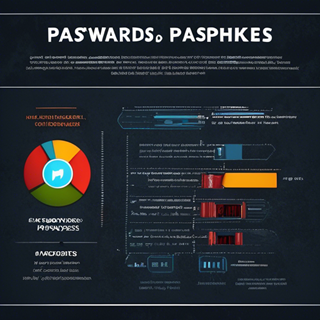Passwords vs. Passkeys vs. Passphrases
As we navigate the ever-changing landscape of digital security, the choices we make regarding authentication methods are pivotal. Passwords, passphrases, and passkeys each bring a unique set of strengths and considerations to the table. In this article, we'll explore the nuances of these authentication methods, dissecting their pros, cons, and real-world implications. From the commonality of passwords to the enhanced security of passphrases and the protection provided by passkeys, we'll delve into the intricacies of these mechanisms. Recognizing that one size does not fit all, we'll also examine the factors influencing the choice between these methods, emphasizing the role of security measures, user education, and the implementation of multi-factor authentication in creating a robust defense against potential threats.

Passwords
- Simple and easy to remember.
- Widely used and supported.
- Familiar, flexible, and compatible.
- Prone to brute-force attacks if not complex.
- Users may choose weak passwords.
- Can be challenging to manage.
Passkeys
A passkey is a short sequence of characters, often numeric, used for user or device authentication. Additionally, a passkey can also refer to a physical device used to access a computer system. In this context, it serves as a more secure alternative to passwords, often implementing two-factor authentication. Passkeys are resistant to online attacks like phishing, making them more secure than traditional passwords.
In this article, when we mention passkeys, we are not referring to physical devices. Instead, we use the term to describe short sequences of characters, often numeric, utilized for user or device authentication in a manner that is distinct from the physical passkey devices used for enhanced security.
- Easier to remember than complex passwords.
- Commonly used in device scenarios.
- Limited character set may reduce security.
- May not provide as strong protection.
Passphrases
A passphrase is a more secure form of a password. It is typically longer, usually at least 14 characters in length, and can contain spaces and symbols. It does not need to be grammatically correct and is often best if the words in the passphrase are completely random.
- Higher security due to length and complexity.
- Potentially easier to remember than complex passwords.
- System support may vary.
- Users might still choose weak passphrases.
In practice, the choice between a password, passkey, or passphrase hinges on the specific security requirements of a system and considerations for user convenience. Security measures, including robust password policies, user education, and the implementation of multi-factor authentication, are vital for enhancing overall security.
Passwords, being the most common form of authentication, are susceptible to various attacks, making the need for strong password policies and user education essential. Passphrases, characterized by their increased length and security compared to traditional passwords, offer enhanced protection but may pose challenges due to their potential cumbersome nature during typing.
Passkeys, as a more secure alternative to passwords, often incorporate two-factor authentication for heightened security. However, they may come with associated costs (e.g. when using physical devices like a YubiKey) and could be less convenient for users. Ultimately, a well-rounded approach to security involves considering the strengths and weaknesses of each authentication method, implementing effective policies, and ensuring user awareness to create a robust defense against potential threats.


